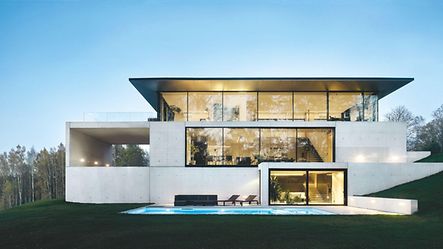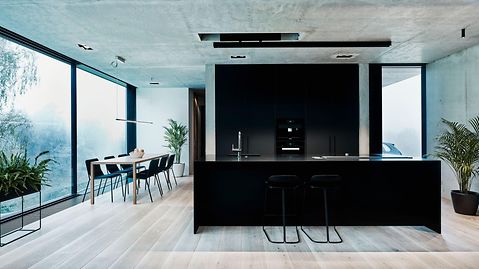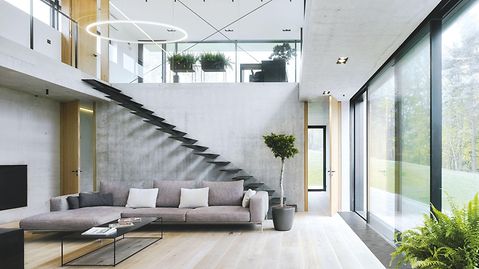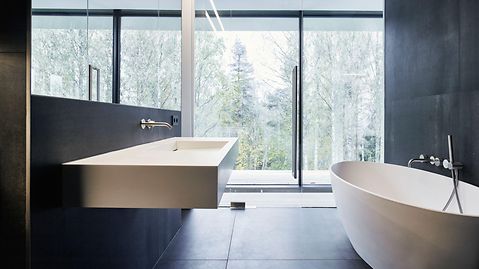
Краткая информация
Тип здания: |
Жилое строительство |
Продукты: |
Фасады |
Расположение: |
Cēsis, Latvia |
Завершение: |
2016 |
Архитекторы: |
Outofbox |
Фасадная компания: |
SmartEco SIA |
Фотоматериал: |
Photo by Maris Locmelis |
Object description
Object description
Cēsis, a medieval port and trading city in northern Latvia, is beautifully situated on the hills and plains above the river Gauja, which also lends its name to the adjacent Gauja National Park. OUTOFBOX architects were well aware of these extraordinary surroundings and created this private house with maximum respect for local nature and topography. The variation in levels made it possible to position the building on the steep river bank so that it invariably looks different depending on the individual point of view. Respecting the client’s desire for privacy, the roadside façade features low transparency and is visible only above a height of one-and-a-half floors. In contrast to the rather secluded character of the street façade, the three-floor southern façade reveals each and every function of the building through its expansive floor-to-ceiling glazing.
Transparency on three levels
Transparency on three levels
The lowest level, which is not visible from the roadside, conceals leisure and sauna facilities, which are adjoined by a wine cellar and a spacious terrace with swimming pool. The ground floor at the entrance level of the building features a large living room with adjacent kitchen/dining area, fireplace and two guest bedrooms. Spanning 12 metres and reaching from floor to ceiling, the slide units of the glazing facing the coppice can be opened, fully removing the partition between the indoors and nature.
The living room spans two floors and is encompassed by a concrete bridge providing access to the house owners’ private rooms, i.e. an office and a spacious bedroom, whose terrace offers a stunning view over the treetops into the ancient Gauja river valley.
High insulation system technology
High insulation system technology
Despite expansive glazing, the architects managed to implement low-energy principles in the building due to a combination of compact building size with an optimised façade-to-floor ratio and the use of highly insulated, triple-glazed Schüco systems that extensively capture the natural daylight, especially through the southern and western sides of the building. An additional technical contribution to the reduction of the building’s energy consumption is the solar thermal collectors placed on the roof.
The first two floors of the building are massive reinforced concrete constructions. The thermal insulation positioned between two plates ensures the exposure of the concrete surfaces both indoors and outdoors. The third floor intentionally reveals a different design – metal-framed openwork spanned by extensive glazing, ensuring a 270 degree panoramic view.
Smart sliding door systems
Smart sliding door systems
The interior maintains the outer building’s puristic design, with exposed concrete surfaces and extensive glazing with the most filigree framing. A feeling of cosiness is generated by the natural oak surfaces and carefully designed elements such as the fireplace slab and the ornamental metal stairs. The combination of inbuilt lighting fixtures, concealed within and hanging from the surfaces, offers countless lighting scenarios, which can be easily controlled by a smartphone, thanks to the application of smart house principles.
The integrated Schüco window, façade and sliding door systems were the perfect fit for the overall design concept. The combination of floor and roof-integrated frame and fitting technology, extremely narrow profile face widths and the structural capacity to integrate expansive triple-glazed elements made these systems the ideal choice. Schüco window and sliding door systems also feature additional smart home functions such as Schüco TipTronic fittings for motorised opening and closing, and Schüco e-slide, a fully concealed drive system that easily and securely opens, closes and locks the floor-to-ceiling sliding units of the large-scale Schüco ASS 70.HI and ASS 77 PD.HI systems.
Галерея








